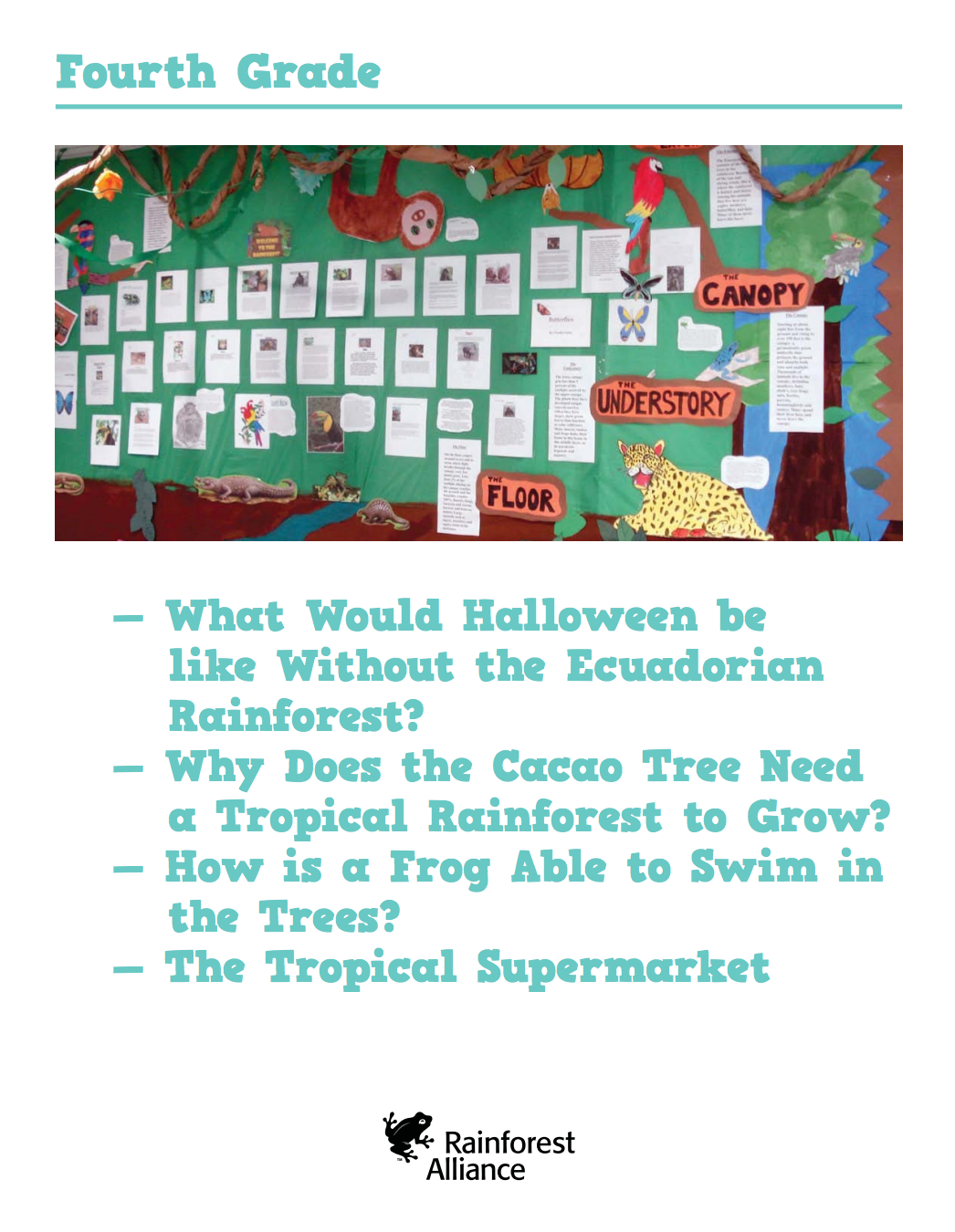Fourth Grade Curriculum: Ecuador
What is the most delicious thing to come from rainforests? Chocolate, of course! In four unique units children will explore chocolate, the food of the gods, and a native tree of the rainforests of Latin America. Students will learn about the Chachi of Ecuador, a small indigenous group who believe strongly in protecting the forest, and who are using cocoa farms to do it. But chocolate isn't the onl y interesting thing found in these wonderful forests. Students will learn about the wealth of biodiversity that thrives within the moist, green forests of a region of Ecuador known as the Chocó.
Lessons
Lesson 1: What Would Halloween Be Like Without the Ecuadorian Rainforest?
Key Concept: Rainforests are home to an extraordinary number of plant types, including some that produce our favorite foods. Students will understand that food comes from far away places and, as a result, has hidden costs associated with its production. Students will understand the relationship between farming practices and the environment that surrounds farms. Students will research sustainable practices of cocoa farming that help protect the quality of environments while producing essential ingredients for food products. Students will understand the work of conservation research teams who work to assure quality of life for humans and other species.
Essential Question: What would Halloween be like without the Ecuadorian rainforest?
Lesson 2: Why Does The Cacao Tree Need Tropical Rainforests to Grow?
Key Concept: Cacao plants have specific requirements to survive. Plants thrive naturally in different biomes. Growing conditions and requirements can be affected by human activity.
Essential Question: Why does the cacao tree need a tropical rainforests to grow?
Lesson 3: How is a Frog Able to Swim In the Trees?
Key Concept: Many plants and animals have developed unique systems of interdependence. These systems are essential for their survival.
Essential Question: How is a frog able to swim in the trees?
Lesson 4: The Tropical Supermarket
Key Concept: Everything has a source. When we consume products from the shelves of supermarkets we are intricately connected to the ecosystem in which the natural resources originated and to the lives of those people who produced them.
Essential Question: Whose lives are we eating?
About Our Curricula
The Rainforest Alliance curricula are unique in that it teaches language arts, math, science, social studies and the arts while addressing the Common Core State Standards (CCSS) for English language arts and mathematics, and the Next Generation Science Standards.
- Learn more about how our curricula adhere to these standards.
- Learn more about the terms and conditions of using our curriculum.
